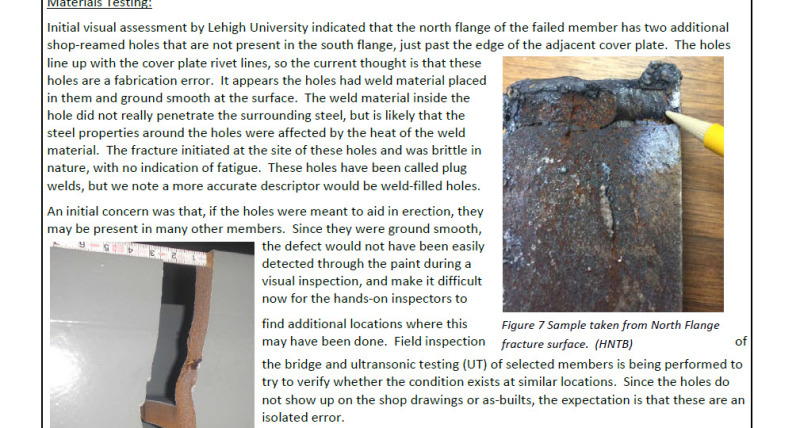Or, each particular portion of that particular member comprising an uncontrolled and undocumented plug weld and associated HAZ comprise an alloy puddle of uncontrolled and uneven composition, some of which may be cold short, i.e., brittle at the temperatures encountered over the river on the day the big bang was heard.
... Okay, I'm not completely happy with that above, so I'll try again:
Each of the plug welds was not documented, and likely not controlled wrt to electrode selection other than using what might have been available in the shop on very short notice without leaving a paper trail. The remainder of the bridge clearly has a DBT low enough to have survived a fair number of NJ/PA winters, but the plug welds in the failed member presumably have a DBT a bit higher than would be suitable.
If a brittle fracture starts in a localized area like that, will it be stopped when it propagates into a less brittle portion of the same member? Would the member have failed if there were only one mis-drilled hole? Should there be some sort of transition visible in the fracture surface as a fracture that started in brittle material reaches slightly less brittle material?
I hope they'll preserve the fractured ends for study.
It sounds like the sort of real-world problem that, e.g., AISC, should suggest as a research topic for someone. Those are probably not the only undocumented plug welds in standing riveted bridges.
Mike Halloran
Pembroke Pines, FL, USA

